This step by step woodworking project is about 4×4 generator shed plans. This small generator shed features a door to the front and a lean to roof. The shed is built on a really strong structure with 2×4 framing, so it is durable in any conditions. My plans come with step by step instructions and you can easily adjust all the dimensions to suit your needs. See my other DIY projects HERE.
We recommend you to invest in the best materials you could afford. Therefore, you should buy weather-resistant lumber, such as pine or cedar. Always take accurate measurements before adjusting the size of the components at the proper size. Drill pilot holes trough the components before inserting the wood screws, to prevent the wood from splitting. See all my Premium Plans in the Shop.
Made from this plan
4×4 Generator Shed Plans
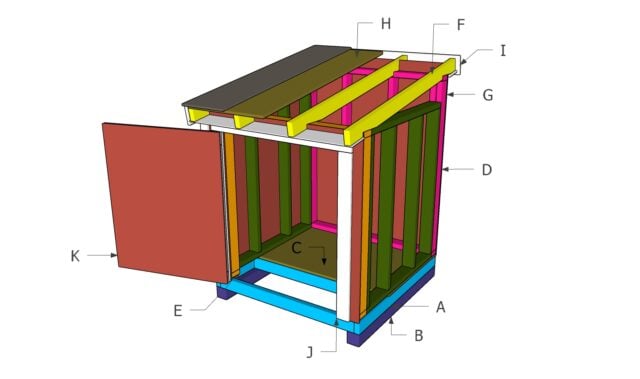
Building a 4×4 generator shed
Cut & Shopping Materials
A – 6 pieces of 6×6 lumber – 48″ long, 4 pieces – 45” FLOOR FRAME
B – 2 pieces of 4×4 lumber – 48″ long SKIDS
C – 1 piece of ¾” plywood – 48”x48” long FLOOR
D – 2 pieces of 2×4 lumber – 41″ long, 4 pieces – 45” long 2xSIDE WALL
E – 2 pieces of 2×4 lumber – 6″ long, 1 piece – 48” long, 4 pieces – 45” long, 4 pieces – 41 ½” long, 2 pieces – 39” FRONT WALL
F – 2 pieces of 2×4 lumber – 48” long, 5 pieces – 52 3/8″ long BACK WALL
G – 1 piece of T1—11 siding – 48”x48 3/4″ long, 3 pieces – 48”x59 ¼” RAFTERS
G – 4 pieces of 2×4 lumber – 60 5/8″ long RAFTERS
H – 5 pieces of 1×4 lumber – 49” long PURLINS
I – 2 pieces of 1×6 lumber –60 3/4” long, 2 pieces – 50 ½” TRIMS
J – 2 pieces of 2×4 lumber – 43 ¾”, 1 piece – 43” JAMBS
K – 2 pieces of 2×4 lumber –36” long, 2 pieces – 36 3/4”, 1 piece of T1-11 siding – 36”x43 ¾” DOOR
Tools
- Safety gloves, glasses
- Miter saw, jigsaw
- Chalk line, tape measure, spirit level, carpentry pencil
- Drill machinery and drill bits
Time
- One Week
Building a small generator shed – Step by step
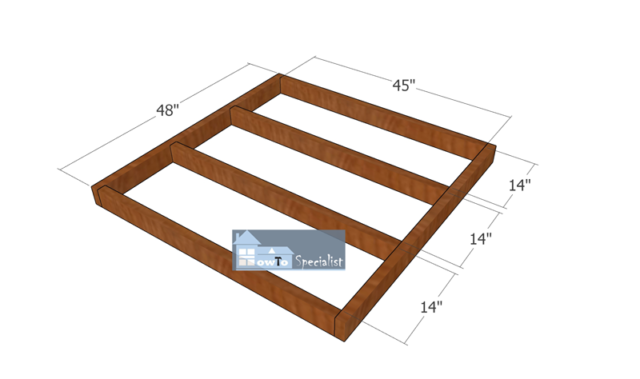
Assembling-the-floor-frame
The first step of the project is to build the floor for the generator shed. Cut all the joists from 2×4 lumber at the dimensions described in the diagram. Drill pilot holes through the rim joists and insert 3 1/2″ screws into the perpendicular components.
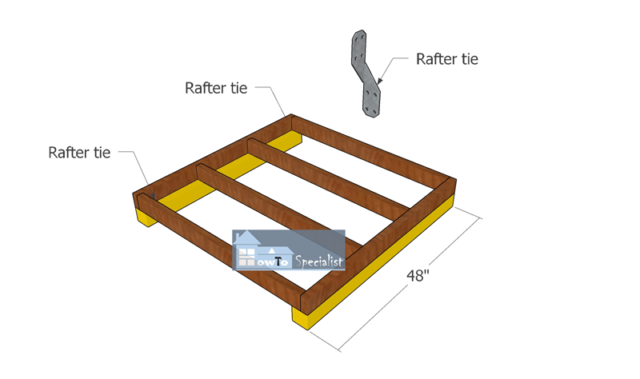
Fitting-the-skids
Fit the 4×4 skids under the floor frame. Use rafter ties and 1 1/2″ structural screws to lock the skids to the floor frame. Use 2 ties for each skid, one at each end.
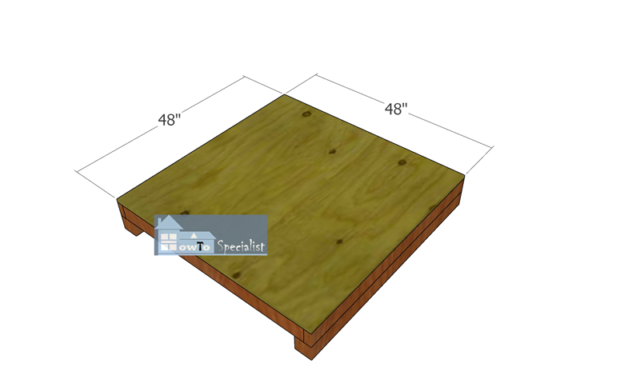
Floor-sheet
Attach the 3/4″ plywood sheets to the floor of the shed. Align the edges flush, drill pilot holes and insert 1 5/8″ screws to lock them into place tightly.

Front-wall-frame
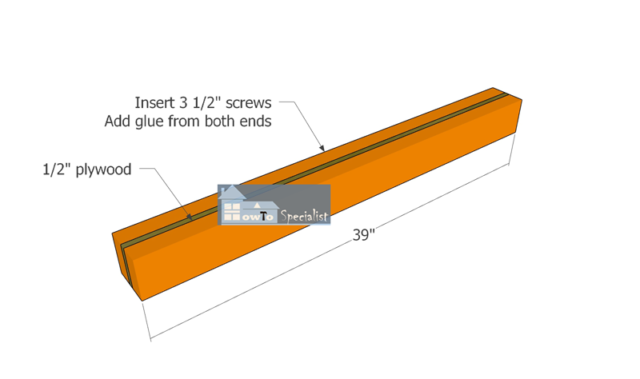
Double-header
Build the front frame for the generator shed from 2×4 lumber. Drill pilot holes through the plates and insert 3 1/2″ screws into the studs.
Also, you need to assemble the double headers for the generator shed. Therefore, sandwich a piece of 1/2″ plywood between the 2x4s. Insert 2 1/2″ screws from both sides and add glue to the joints. Drill pocket holes at both ends of the double header and insert 2 1/2″ screws into the vertical studs.
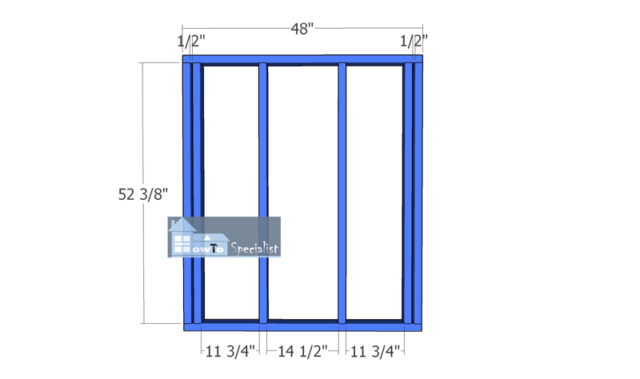
Back-wall-frame
Build the back wall for the generator shed in the same manner described above. Notice the double studs placed at both ends of the wall. Place 1/2″ plywood blockings between the double studs.

Side-wall-frames
Assemble the side walls for the generator enclosure, as well. Make sure the edges are flush and check if the corners are square.
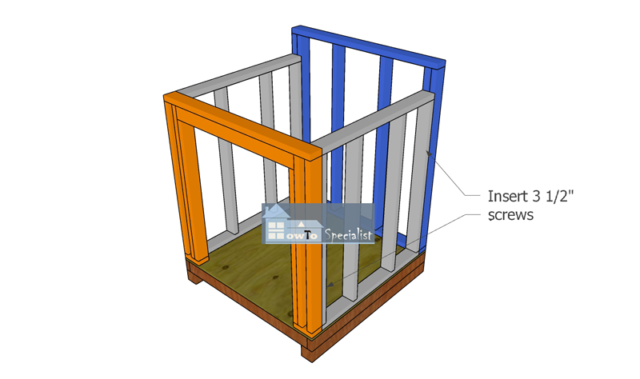
Assembling-the-shed-frame
Fit the walls to the floor of the shed, aligning the edges with the floor of the shed. Drill pilot holes through the bottom plates and insert 3 1/2″ screws into the floor. In addition, lock the adjacent walls together tightly with 3 1/2″ screws, after drilling pilot holes.
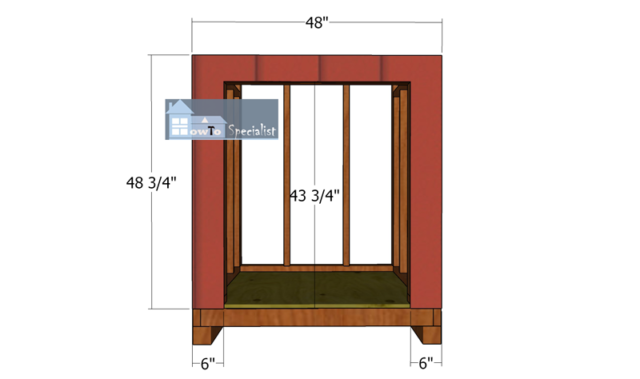
Front-wall-panel
Attach the T1-11 siding sheet to the front of the shed. Align the edges flush and insert 1 5/8″ screws to lock them into place tightly. Use a saw to make the cut out for the door opening.
Building the roof structure

Rafters
Use 2×4 lumber for the rafters. Mark the cut lines to the rafters and get the job done with a saw. Smooth the edges flush with sandpaper.
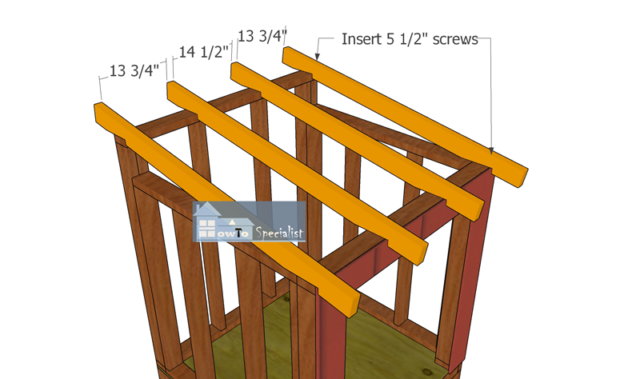
Fitting-the-rafters
Fit the rafters to the top of the shed. Place the rafters equally spaced, drill pilot holes and insert 5 1/2″ screws to lock them into place tightly.
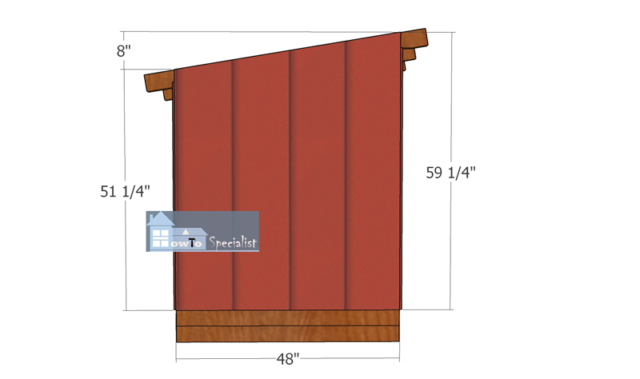
Fitting-the-siding-panels
Attach the siding sheets to the sides of the shed. Make the cuts so the panel is perfectly flush with the top of the rafters,
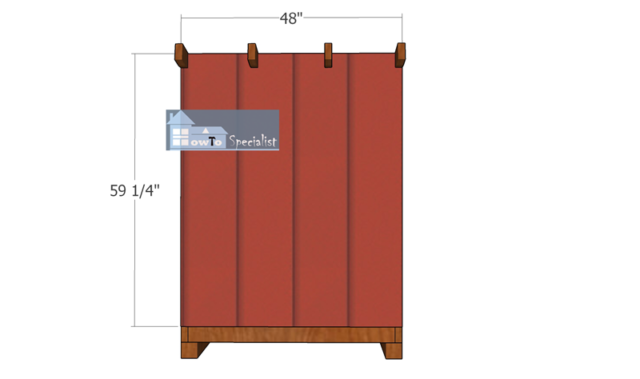
Fitting-the-back-wall-panel
Attach the siding sheet to the back of the shed. Make the notches to the top of the back panel. Attach the siding to the back of the shed and insert 1 5/8″ screws to lock it into place tightly.
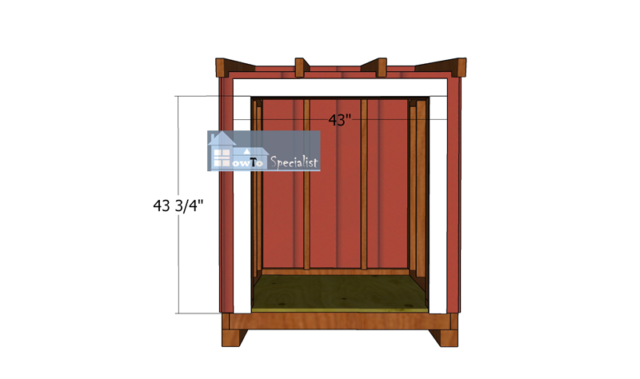
Door-jambs
Attach the 2×4 boards around the opening. Align the edges flush and insert 2 1/2″ screws to lock the jambs to the frame of the shed.
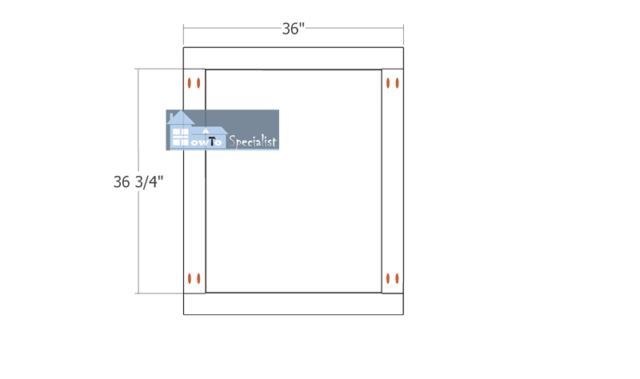
Door-frame
Use 2×4 lumber for the door frame. Drill pocket holes at both ends of the vertical components. Align the edges flush and make sure the corners are square. Insert 2 1/2″ screws to assemble the door frame.
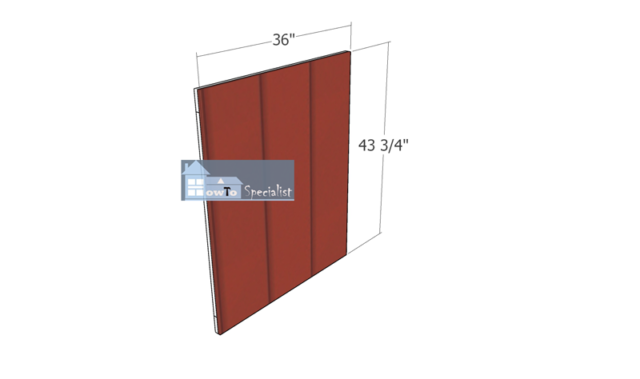
Fitting-the-door-panel
Attach the panel you have cut out in a previous step to the door frame. Align the edges flush and insert 1 5/8″ screws to assemble the shed door.

Fitting-the-door
Attach the door to the generator shed. Attach it to the jambs with hinges and also install a latch.

Fitting-the-purlins
Fit the 1×4 purlins to the top of the shed. Place the purlins every 16″ on center and insert 1 5/8″ screws to lock them into place tightly.
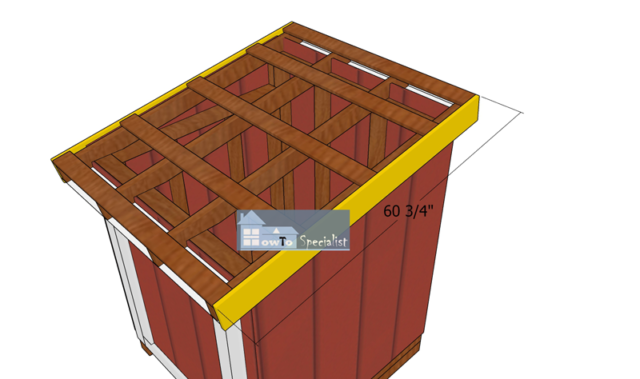
Side-roof-trims
Fit the 1×6 trims to the sides of the shed. Align the edges and insert 2″ nails to lock them to the purlins.
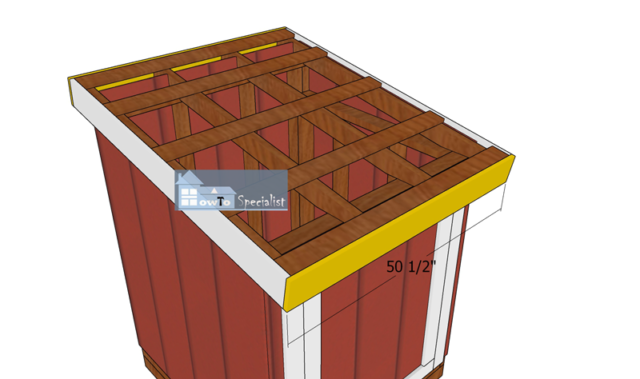
Front-and-back-roof-trims
Attach the trims to the front and back of the shed, as well. Align the edges flush and insert 2″ nails to lock them into place.
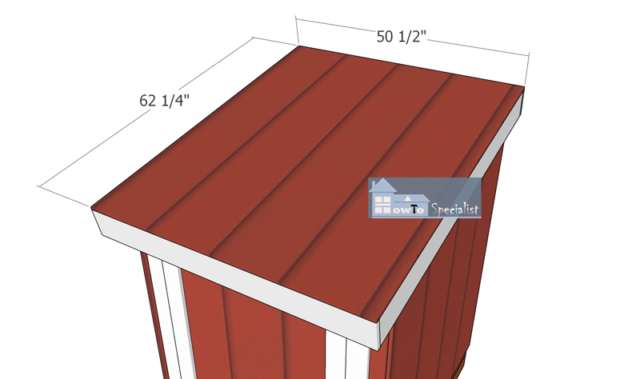
Fitting-the-roof-sheet
Fit the metal roofing sheet to the top of the shed. Align the edges flush and set it to the purlins with screws. Install drip edges / metal trims along all edges.

4×4 generator shed plans – how to

4×4 generator shed plans – dimensions
Last but not least, we recommend you to take care of the finishing touches. In order to get a professional result, fill the holes and the gaps with wood filler and let it dry out for a few hours.
Read the instructions of the generator and drill an air hole into the walls of the shed, for proper ventilation. Alternatively, the gaps between the roof and the front wall might be enough to let the exhaust out.
If you want to download the plans. just click on the GET PDF PLANS button bellow.
Thank you for reading our project about 4×4 generator shed plans and we recommend you to check out the rest of the projects. Don’t forget to LIKE and SHARE our projects with your friends, by using the social media widgets.

